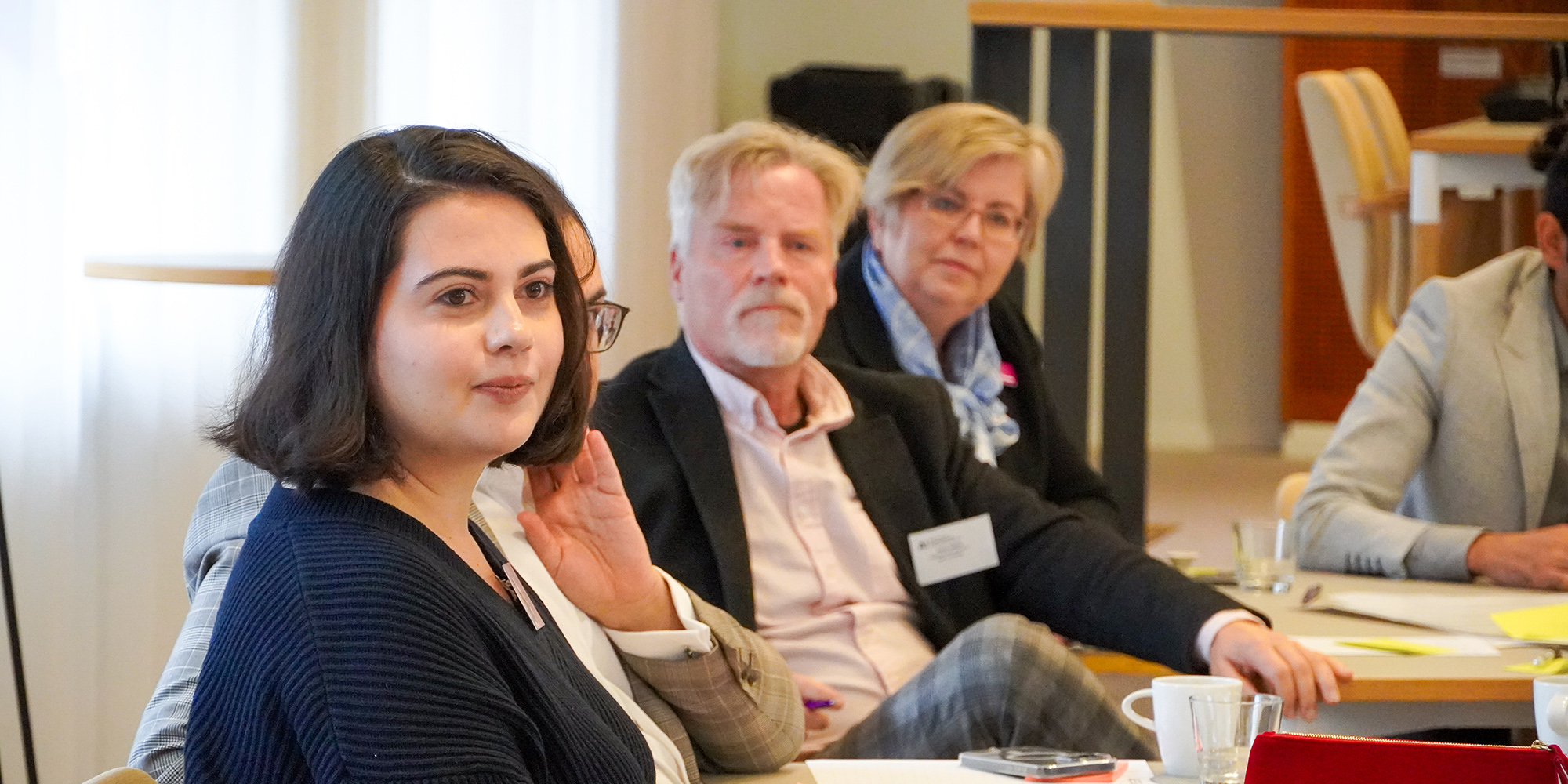“The participants have given us feedback explaining that now they view the matter from a completely different perspective. It is quite flattering to know that we have been able to shift their whole mindset.”
This is how Martti Kekomäki, a pioneer of Finnish health economics, describes the impact of the Healthcare Management Education Program (Johtaminen terveydenhuollossa). He was involved in launching the Healthcare Management Education Program’s forerunner, TEJOKO program, in 1992. Later, he was a trainer and long-term member of the steering group in both programs.
Earlier in his career, Kekomäki gained knowledge about healthcare economics in the United States, when it was not yet available here. His training was motivated by observing inaccurate health indicators he encountered while working as a senior physician at Aurora Hospital.
“The healthcare committee and management consultants did not have any idea about the objectives of the healthcare service: our product is better health, not a consultation with a doctor, laboratory testing or an inpatient care,” Kekomäki recalls.
The program’s steering group still involves a number of prominent industry representatives. Emeritus professor Mats Brommels, who made his academic career both in Finland and Sweden at Karolinska Institutet, has also been involved since the times of TEJOKO. When he started developing TEJOKO, he was a healthcare administration professor at the University of Helsinki.
Brommels is a trainer in the module which deals with the future prospects of social welfare and healthcare. He estimates that the module has succeeded in accurately estimating future developments over the decades.
“A key factor in the development has been the involvement of the private sector in public healthcare through competitive tendering and outsourcing. That is why it has been worth considering and introducing a business-like management approach in the public sector as well,” says Brommels.
According to Brommels, two trends are on the horizon. The first one is driven by technological development involving digitalization and precision medicine. The second trend is partly made possible by the first one: the citizens’ activation and participation in the treatment of their own chronic diseases.
“Digitalization has showed that social welfare and healthcare customers are diverse and provided services must be customized to different customer groups.”
Kekomäki also considers digitalization to be the strongest factor of change in healthcare for the next ten years.
“Technology and data collection can be used to measure the effectiveness of treatment and to compare different treatments with each other. The goal of integration in social welfare and healthcare requires that all actors' data is constantly compatible in real time. The question is, in which decade this will happen,” says Kekomäki.
Efficiency in theory and practice
Marjukka Mäkelä, emerita professor in health economics, continued Kekomäki’s work since he retired from training a few years ago. Mäkelä has renamed her module, The Efficiency and Prioritization of Healthcare Methods.
According to Mäkelä, efficiency is a clear concept in principle, but measuring it in practice is challenging. Mäkelä considers the efficiency of the microeconomy, that is a single intervention, as a key area. Its objective is to set in proportion the cost of an intervention and its value for improving health, i.e. quality-adjusted life years.
“It is easy to calculate how much an intervention costs, but when assessing its efficiency, you have to rely on the research literature. For example, if you compare a catheter-based cardiac surgery with the traditional method, the only information to be compared directly is whether the patient died or not.”
Important questions also include, according to Mäkelä, how many have recovered from the pain and returned to work after the operation. In practice, essential information is often missing, so improvements on quality of life can only be speculative. Often the changes are very small.
Even when there is information available on efficiency, it is not always used to support decision-making, Mäkelä points out.
“When making decisions on these matters, all options are not considered together, but rather one at a time. That is when emotions step in, and the loudest voices may get more attention than the quiet ones.”
Networking and knowledge sharing
The Finnish Medical Society Duodecim has been Healthcare Management Education Program’s partner from the very beginning. The Society assigns experts to the steering group. It also publishes a lot of medical information like medicine literature and tools, which the program also utilizes.
“This course seeks next-generation leaders who will have the chance to network and share their expertise with each other,” says Juha-Pekka Turunen, the Head of Education at Duodecim.
Turunen is not only a member of the Healthcare Management Education Program’s steering group, but also an alumnus of the first program. He estimates that since his days in the program, leadership skills have developed a lot both in healthcare and in society in general. The Health Executive MBA program, which Turunen and many others have continued on to after completing the Healthcare Management Education Program, has also had its impact.
“In the past, the doctors were required to have management skills and financial expertise only later in their careers, when specialist gained more responsibility through experience. Today, some of the younger doctors focus on management already early in their careers,” Turunen says.
Doctors master critical thinking
Professor and the chairperson of the board of Duodecim, Minna Kaila, also ended up in proram’s steering group via Duodecim around ten years ago.
“The eternal questions are related to leading people: how to do it, how to select people who can actually do it and implement it by speaking and especially by listening,” Kaila describes.
Doctors are often seen as a difficult profession in terms of leadership, with a strong culture of their own and a critical attitude towards leaders from outside. Kaila too thinks that it is easier to make a doctor or a researcher a leader of other doctors than, for example, making a business school graduate a leader of doctors. Yet she doesn’t believe that doctors are outstandingly difficult to lead.
“If you compare doctors to some other profession, the same goes with other highly educated professionals who master critical thinking. Things must be justified plausibly, reliably and competently for them. Quite often attempts are made to implement changes without being able to justify them.”
Will the health and social services reform finally take place?
Health and social services reform has become an eternal question almost as significant as leading people. According to Kaila’s calculations, “the sixth season” is already going on. That is why some members of the steering group are a little skeptical about the implementation of the current proposal.
“I consider it stubborn to implement the reform in the middle of the pandemic. I don't know how the system will handle this, since the reform also involves funding and dealing with the pandemic is costing billions,” Kaila ponders.
According to Kekomäki, healthcare leaders must also be aware of the political realities and accept them. Ethical questions can also be looked at calmly from the economic point of view,” he underlines.
“The leader’s job is not to demand more money but to reach the best possible outcome with the money available,” Kekomäki states.
Brommels estimates that when the reform is carried out, it will create a new kind of administrative structure which will increase the need for training.
“On the other hand, if the reform fails again, regional and provincial solutions will emerge, and these will not be cast in the same mold by any means. In that scenario, peer learning and comparing students’ own experiences will be emphasized in the training,” says Brommels.
The program provides tools for addressing current healthcare challenges and engages in the thoroughgoing development of a range of management skills. Read more





















